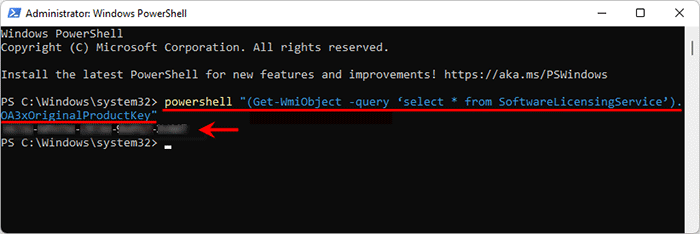Start small and gradually scale your AI trades in stocks. This method is perfect for dealing with high risk environments, such as the penny stocks market and copyright markets. This strategy allows for you to gain valuable experience, refine your algorithm, and manage the risk effectively. Here are the 10 best methods to scale AI stock trading operations in a gradual manner:
1. Prepare a clear plan and strategy
Before diving in, determine your goals for trading and risk tolerance. Additionally, you should identify the markets you’re interested in (e.g. penny stocks or copyright). Start with a smaller and manageable part of your portfolio.
The reason: A clear plan keeps you focused and limits emotional decision-making as you begin small, while ensuring longevity and growth.
2. Test the paper Trading
You can begin by using paper trading to practice trading. It uses real-time market data without putting at risk the actual capital.
Why is this? It lets you test your AI model and trading strategies without financial risk in order to find any problems prior to scaling.
3. Select an Exchange or Broker with Low Fees
Make sure you choose a broker with low costs, which allows for small amounts of investments or fractional trades. This is particularly helpful for those who are just beginning with a penny stock or copyright assets.
Examples of penny stocks include TD Ameritrade Webull and E*TRADE.
Examples of copyright: copyright copyright copyright
Why: Reducing commissions is essential in smaller amounts.
4. Choose a Specific Asset Class Initially
Tip: Focus your learning by focusing on one class of asset at first, such as penny shares or cryptocurrencies. This will cut down on level of complexity and allow you to focus.
Why? Concentrating on one market allows you to gain expertise and cut down on learning curves before expanding into multiple markets or asset classes.
5. Use small position sizes
Tip: Minimize the risk you take by keeping your position sizes to a small proportion of the value of your portfolio.
What’s the reason? It lets you cut down on losses while fine-tuning your AI model and gaining a better understanding of the market’s dynamic.
6. Gradually increase capital as you gain confidence
Tip: As soon as you begin to see consistent results, increase your trading capital slowly, but only after your system has been proven to be reliable.
What’s the reason? Scaling lets you increase your confidence in your trading strategies and the management of risk prior to taking bigger bets.
7. At first, focus on an AI model with a basic design.
Tips – Begin by using basic machine learning (e.g., regression linear, decision trees) to forecast prices for copyright or stock before moving on to more sophisticated neural networks or deep-learning models.
Reason: Simpler trading systems are simpler to keep, improve and understand as you begin your journey.
8. Use Conservative Risk Management
Tip : Implement strict risk control regulations. These include tight stop-loss limits, size limitations, and moderate leverage usage.
The reason: Risk-management that is conservative can prevent huge losses on trading early during your career. It also guarantees that you are able to expand your strategy.
9. Reinvesting Profits back into the System
Tip – Instead of cashing out your gains prematurely, invest them in making the model better, or scaling up operations (e.g. by upgrading your hardware, or increasing trading capital).
Why is it that reinvesting profits help you compound returns over time, while also building the infrastructure required to manage larger-scale operations.
10. Regularly review and optimize your AI models frequently to ensure that you are constantly improving and enhancing them.
You can enhance your AI models by continuously monitoring their performance, updating algorithms or improving the engineering of features.
Why: By regularly optimizing your models, you will make sure that they are constantly evolving to reflect the changing market conditions. This can improve your predictive capability as you increase your capital.
Bonus: Think about diversifying after the building of a Solid Foundation
Tip: Once you’ve built a solid foundation and your strategy has consistently proven profitable, you might want to consider adding other asset classes.
Why: By allowing your system the chance to profit from different market conditions, diversification can help reduce risk.
Beginning small and increasing slowly gives you the time to adapt and learn. This is essential to ensure long-term success in trading, especially in high-risk environments like penny stocks and copyright. Take a look at the most popular such a good point about ai copyright prediction for more info including ai stock prediction, ai trading app, trading ai, stock ai, ai trading, ai stocks, ai stock analysis, ai for stock trading, ai copyright prediction, stock ai and more.

Top 10 Tips For Leveraging Ai Backtesting Software For Stocks And Stock Predictions
To enhance AI stockpickers and to improve investment strategies, it is crucial to make the most of backtesting. Backtesting gives insight into the effectiveness of an AI-driven strategy under previous market conditions. Here are 10 top ways to backtest AI tools to stock pickers.
1. Make use of high-quality Historical Data
TIP: Make sure the backtesting software is able to provide precise and up-to date historical data. This includes stock prices and trading volumes, in addition to dividends, earnings and macroeconomic indicators.
The reason: Quality data guarantees that backtesting results are based on real market conditions. Backtesting results could be misled by incomplete or inaccurate data, which can influence the accuracy of your plan.
2. Make sure to include realistic costs for trading and slippage
Backtesting: Include real-world trading costs when you backtest. These include commissions (including transaction fees), slippage, market impact, and slippage.
Why? If you do not take to account trading costs and slippage in your AI model’s possible returns could be understated. By incorporating these elements, you can ensure that your backtest results are closer to real-world trading scenarios.
3. Tests in a variety of market conditions
TIP: Re-test your AI stock picker in a variety of market conditions, such as bear markets, bull markets, as well as periods that are high-risk (e.g., financial crises or market corrections).
Why: AI model performance may vary in different market environments. Examining your strategy in various conditions will show that you have a robust strategy that can be adapted to market cycles.
4. Test Walk Forward
TIP: Run walk-forward tests. These are where you compare the model to a sample of rolling historical data before confirming the model’s performance using data outside your sample.
Why is this: The walk-forward test can be used to assess the predictive ability of AI with unidentified information. It’s a better gauge of performance in real life than static testing.
5. Ensure Proper Overfitting Prevention
TIP: Try testing the model on different time periods in order to ensure that you don’t overfit.
Why: Overfitting occurs when the model is too closely tailored to historical data which makes it less efficient in predicting future market developments. A model that is balanced will be able to adapt to different market conditions.
6. Optimize Parameters During Backtesting
Tip: Use backtesting tools to optimize important parameters (e.g. moving averages, stop-loss levels, or position sizes) by tweaking them repeatedly and then evaluating the effect on return.
The reason: The parameters that are being used can be adapted to improve the AI model’s performance. As mentioned previously it is crucial to make sure that the optimization doesn’t result in an overfitting.
7. Drawdown Analysis & Risk Management Incorporated
Tips Include risk-management strategies such as stop losses and risk-to-reward ratios reward, and position size during backtesting. This will help you assess the strength of your strategy in the event of a large drawdown.
How to do it: Effective risk-management is essential for long-term profits. You can identify vulnerabilities through simulation of how your AI model handles risk. After that, you can modify your strategy to get higher risk-adjusted returns.
8. Analysis of Key Metrics beyond Returns
Tip: Focus on key performance indicators beyond the simple return, such as the Sharpe ratio, maximum drawdown, win/loss, and volatility.
These measures can assist you in gaining a comprehensive view of the returns from your AI strategies. In relying only on returns, it is possible to miss periods of volatility, or even high risks.
9. Simulate Different Asset Classes and Strategies
Tips: Test the AI model with different asset classes (e.g. ETFs, stocks, copyright) and different strategies for investing (momentum and mean-reversion, as well as value investing).
The reason: By looking at the AI model’s adaptability, it is possible to evaluate its suitability for different market types, investment styles and high-risk assets such as cryptocurrencies.
10. Check your backtesting frequently and refine the approach
TIP: Ensure that your backtesting software is updated with the latest data from the market. This will allow it to grow and reflect changes in market conditions, and also new AI features in the model.
Why? Because markets are constantly changing as well as your backtesting. Regular updates will ensure that you keep your AI model current and ensure that you get the best results from your backtest.
Bonus Monte Carlo simulations may be used for risk assessments
Use Monte Carlo to simulate a variety of possible outcomes. It can be accomplished by conducting multiple simulations with different input scenarios.
Why: Monte Carlo models help to understand the risk of different outcomes.
If you follow these guidelines using these tips, you can utilize backtesting tools to evaluate and improve the performance of your AI stock-picker. Through backtesting your AI investment strategies, you can be sure that they are robust, reliable and able to change. Check out the top best ai stocks for blog info including ai stock prediction, incite, trading ai, ai for stock market, best stocks to buy now, ai stock, best ai copyright prediction, ai stock, ai stock prediction, stock market ai and more.

